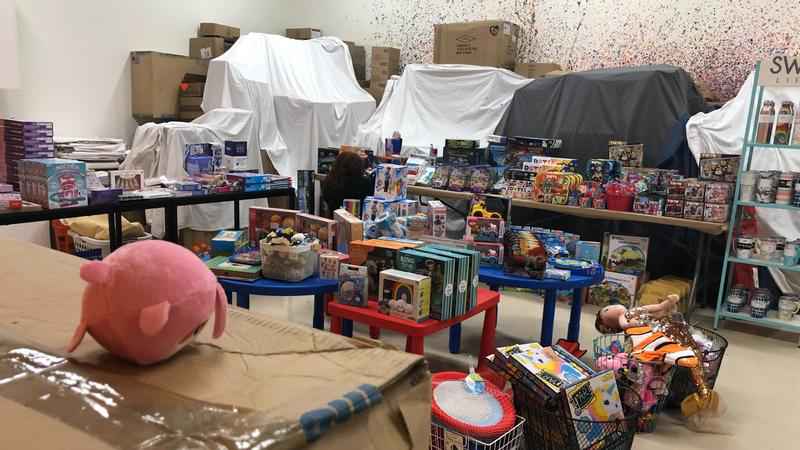Small businesses trying to rebound in midst of supply chain slowdown
[anvplayer video=”5073932″ station=”998122″]
Christmas came early for Amy Saldanha.
The owner of two brick-and-mortar Kiddywampus stores — plus a pop-up location — got a welcome sight walking into work: newly delivered boxes of toys.
"It’s been a hot mess this year,” Saldanha says. “Sometimes we get four and five pallets in one day. We just take whatever we can, because we’re so relieved that we’re going to have stuff."
She and other small business owners are grappling with a supply chain slowdown during the busy holiday shopping season.
"We’ve gotten inventory that didn’t arrive at all,” Saldanha says. “We’ve got some arriving months later. Some that we’re not sure we’re going to get, and lots of replacement inventory along the way."

[Rich Reeve/KSTP]
For merchants and their customers, it’s a time of uncertainty.
Including Aubrey Thoren, out shopping with her kids, Hudson and Elsa, at Kiddywampus in Hopkins.
"it’s been a little bit more of a struggle, seeing certain shopping store shelves empty,” Thoren says. "We’re trying to be more flexible and creative, so if we can’t find what we’re really looking for, we kind of go on to the next thing. But it’s been more challenging this year than in years prior."
Experts say the supply chain logjam was triggered by overloaded transportation networks, labor shortages at key checkpoints and growing consumer demand.
"It’s a perfect storm, right?” Saldanha says. “So we got toys that are made, they’re sitting in China, that aren’t able to get on container ships, because there’s a shortage of actual ships."
She thinks some of her orders have arrived in the U.S., but are still waiting for truck transport.
Saldanha says she over-ordered this year by about 40% this year, starting in May.
“Manufacturers were forced to make really tough choices because shipping costs escalated upwards of 500%,” she explains. “I would say we’re probably down 35% of the inventory that we’re still waiting on. But in some cases, we’ve ordered replacement inventory."
Meanwhile, at the Good Things Kids store in White Bear Lake, buyer Marnie Matz says she started ordering inventory in January.
She says the store has been in business for fifty years.
“We bought early in the year,” she notes. "We determined what was going to be our hot sellers, and then we worked really close with our toy reps to make sure, ‘hey is it going to get off the boat, is it not going to get off the boat.’"
Saldanha — who started with a single store 15 years ago — says larger, outdoor toys are more likely to be delayed because smaller items are cheaper to ship.
But customers should be prepared.
"We’re just being as transparent as we can with customers saying, it’s just not going to be here, it’s on a boat somewhere and we don’t know where,” she says. “So if I see that something’s not coming in, I can start working the phones and utilizing relationships I’ve built over 15 years in the business, and the relationships I have with manufacturers and other retailers, to figure out where the inventory is and how am I going to get it.”
Saldanha says the supply chain issues are pushing wholesale prices up.
Some items, she says, cost a few pennies more, others, 20-30%
Matz says she sometimes has to make hard choices about orders that haven’t yet arrived.
“There are certain things where you say okay, cancel that order,” she says. “Or you decide you could sell through in January or February, which is totally possible.”
Thoren says she and her children are doing some shopping, but are also considering a different approach to the holidays.
“[I’m] trying to encourage them to just think outside the box,” she says. “Whether it be an experience, rather than get a thing, I think, is kind of more fun. Make a memory together."